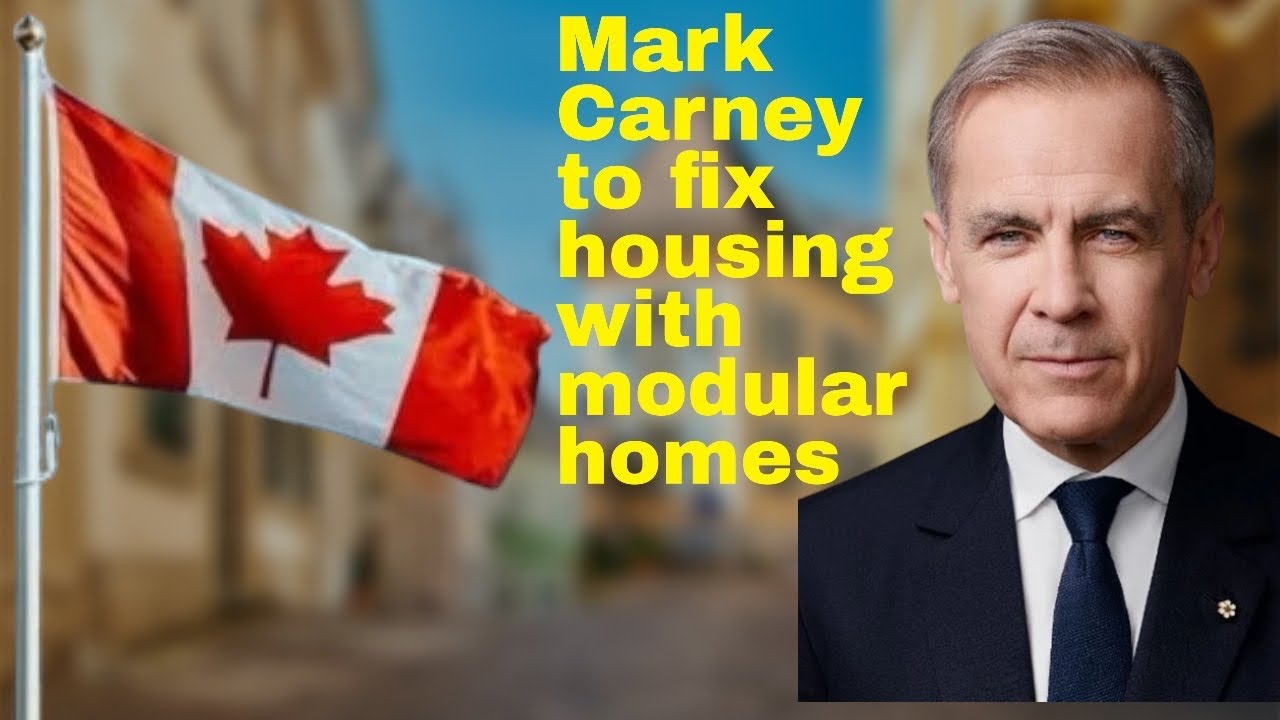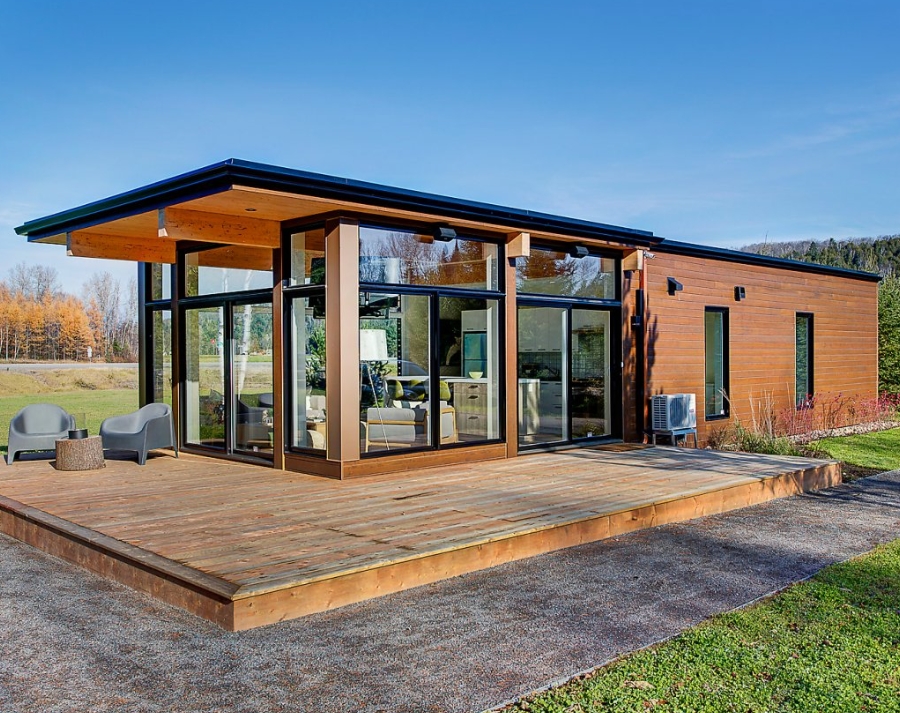Canada’s new Prime Minister, Mark Carney, has laid out one of the most ambitious housing agendas Canada has ever seen: 500,000 new homes per year. The plan hinges on unlocking public land, utilizing prefabricated construction methods, and launching a new federal agency—Build Canada Homes. It’s bold. It’s urgent. And it’s already making waves in housing circles across the country.
But is it feasible? And what are the ripple effects for communities like Vaughan, Kleinburg, and Woodbridge that are already grappling with affordability, growth, and infrastructure constraints?
Let’s dive into the numbers, the context, and the obstacles that could either turn this plan into a legacy—or a letdown.
🧱 500,000 Homes a Year: Ambitious, But Are We Ready?
To understand how large this promise is, we need context. Canada’s highest historical level of housing completions was in the mid-1970s—around 260,000 units. In the last five years, we've averaged between 200,000–220,000.  So Carney’s proposal more than doubles what we’ve ever managed.
So Carney’s proposal more than doubles what we’ve ever managed.
🏗️ Stat Check: In 2023, Ontario alone completed fewer than 100,000 housing units.
Housing isn’t built in a vacuum. It needs land, permits, skilled workers, materials, infrastructure, and alignment across three levels of government. Without clear details and resource commitments, the 500,000 figure may risk becoming another political soundbite.
🏗️ Build Canada Homes: Centralizing Development, Decentralized Realities
The centerpiece of Carney’s proposal is a federal agency called Build Canada Homes. The goal: take publicly owned land and develop it into affordable housing, especially through prefabricated methods that speed up the build cycle.
It’s an innovative approach in theory. But execution is key.
Most of the public land in major urban centers is already designated for parks, infrastructure, or government buildings. What's left is often located far from the amenities that make housing viable—jobs, transit, schools. And in a city like Vaughan, for example, zoning density battles are already playing out in neighbourhoods like Sonoma Heights, where residents are pushing back against intensification.
🧭 Local Note: Vaughan’s 2022 intensification plan faced strong opposition from residents in Kleinburg and East Woodbridge due to traffic and green space concerns.
If the agency is serious, it will have to work closely with municipal partners—not override them.
📍 Housing Is Local: Zoning Gridlock Is the Real Bottleneck
While the federal government can fund housing and influence development indirectly, zoning, approvals, and site planning are handled locally.
That means a federal promise is only as strong as its weakest link in the approval chain. And those chains? They’re slow.
In the GTA, for instance, developers face approval timelines that stretch into years—not months. Public consultations, site studies, environmental assessments, traffic reviews, and heritage considerations are just some of the hurdles. Even small developments in Vaughan, Mississauga or Brampton can face years of delay.
Unless municipal processes are streamlined—and unless residents are brought on board—scaling up housing construction will remain a massive uphill climb.
💰 Tax Incentives: Important, But Not a Silver Bullet
Carney’s housing plan includes financial incentives—cutting the GST on new home construction, offering tax credits to purpose-built rental developers, and redirecting CMHC support.
These are good steps. Lowering taxes on rental construction can boost investor appetite and bring more units to market. However, tax incentives alone won’t overcome supply-side barriers like labour shortages, high land costs, and approval delays.
In the GTA, where the average home price still hovers well above $1 million, even a 5% GST break may not move the needle significantly for buyers.
💸 Quick Fact: In 2024, the average detached home price was $1.32 million. A GST rebate is helpful—but won’t close the gap for most first-time buyers.
👷♂️ Labour: The Quiet Crisis
Even if every approval is fast-tracked and land is ready, there’s another bottleneck: workers.
Canada is already facing a skilled labour shortage in the construction sector. Carpenters, plumbers, electricians, drywallers—these trades are stretched thin. Many are retiring. Few are replacing them fast enough.
To scale up to 500,000 homes per year, we would need to double or triple the current labour force in construction. That means major investment in trade schools, apprenticeship programs, and immigration pathways specifically targeting skilled trades.
🛠️ Reality Check: The construction sector added just 30,000 jobs nationwide in 2023. We’d need 10x that growth rate.
The federal government has signaled support for this, but timelines matter. Housing targets are yearly. Training new electricians takes four to five years. The math doesn’t lie.
🏘️ Prefab Homes: The Right Tool or a Tough Sell?
Prefabricated housing—where parts of a home are manufactured offsite and assembled on location—offers real promise. It speeds up builds, reduces waste, and allows for higher consistency and quality.
But there are perception challenges.
In many communities, prefab still carries a stigma. It’s seen as temporary, low-cost, or unsuitable for families—even though modern prefab homes are durable, attractive, and highly customizable.
🏡 Local Insight: In parts of York Region, prefab was previously used in emergency shelters—but rarely in mainstream family housing. That reputation is hard to shake.
Changing hearts and minds will be just as important as building frames and walls.
👪 The Wealth Gap: Boomers vs. First-Time Buyers
One of the toughest dynamics in the housing debate is generational. For many older Canadians, their home is their primary asset and retirement plan. Any meaningful drop in home values could directly impact their quality of life.
At the same time, younger buyers are facing prices so high, they’ve essentially been shut out. The average home-to-income ratio in Canada is now over 7:1. In places like Toronto, it’s even worse.
This creates a policy paradox: how do you make housing affordable again without crashing the very wealth system your economy relies on?
Carney’s team will need to walk a tightrope—stimulate new affordable supply without triggering a nationwide devaluation. That may mean targeted subsidies for first-time buyers or more creative equity-sharing models.
🌍 Land Ownership Models: Could Canada Learn from Europe?
Some countries, like the Netherlands, lease public land to homebuilders rather than sell it. This keeps land costs down, maintains public control, and allows for longer-term affordability.
Could that work in Canada?
Possibly. But culturally, Canadians value ownership. In the suburbs especially, owning the land beneath your feet is seen as a non-negotiable part of the Canadian dream. A leasehold model would face public skepticism—and potentially political resistance.
Still, it’s a model worth exploring, particularly in high-cost areas like downtown Toronto or Vancouver, where land costs alone make many developments financially unviable.
🚧 Infrastructure Gaps: Can We Support This Growth?
One of the most overlooked elements of any housing expansion plan is infrastructure.
You can’t just build homes—you need roads, schools, hospitals, transit, water, and sewage systems to support them. In rapidly growing areas like Vaughan, York Region, or Mississauga, the infrastructure is already under pressure.
A housing plan without an infrastructure plan is like building a high-rise with no plumbing.
🚌 GTA Watch: The Yonge North Subway Extension has been delayed again—and this kind of transit bottleneck directly limits where dense housing can be built.
This is where intergovernmental coordination becomes essential. Municipalities control local infrastructure, but they need federal and provincial funding to expand it. Without synchronized planning, new housing could lead to overcrowding, congestion, and service delays.
📉 The Danger of Overpromising
If the 500,000-home promise fails to materialize, it could lead to public disillusionment—not just with the government, but with any future housing reform. Voters may tune out. Developers may hesitate to commit capital. Municipalities may revert to NIMBYism.
That’s why transparency and phased timelines are key. Canadians don’t need everything tomorrow. But they do need to see visible, measurable progress.
🧠 Final Thoughts: A Vision With Potential—If the Execution Matches the Hype
Mark Carney’s housing vision is exactly what this country needs—ambitious, transformative, and willing to challenge the status quo.
But without a clear strategy on skilled labour, municipal cooperation, infrastructure funding, and cultural attitudes around housing, it risks falling short.
The opportunity is there. But it will require real collaboration, pragmatic planning, and an open dialogue with Canadians about what housing should look like in the next decade.
If Carney’s government can deliver even part of this vision, it could reshape housing in Canada for a generation. But it won’t be easy—and it won’t be fast.

